Urban Landscape Perception Research Based on the ERP Method: A Case Study of Jingdezhen, China
Abstract
1. Introduction
1.1. Urban Landscape and Perception Research
1.2. Perceptual Match: Consistency and Inconsistency
1.3. The Dichotomy of Historical and Modern Perspectives
1.4. Previous Research Methods and Limitations
1.5. Event-Related Potential-Based Method for Perceptual Evaluation
2. Materials and Methods
2.1. Study Area
2.2. Participants
2.3. Experimental Stimuli
2.4. Experimental Procedure
2.5. Data Acquisition and Analysis
- (1)
- Data format conversion and electrode positioning. Initially, the device manufacturer’s data format needs to be converted into a generic format compliant with analysis standards, and the corresponding coordinate file for electrode positioning is located based on the EEG cap model provided by the manufacturer.
- (2)
- Data filtering. The ERP components of evoked potentials are triggered by specific cognitive activities, each with a different frequency range. To eliminate unwanted frequencies, further digital filtering is required to obtain the desired data. This study uses a 0.1–30 Hz band-pass filter to retain frequencies within a specific range.
- (3)
- Baseline correction. Since the original waveform may be offset after digital filtering, baseline correction at the beginning of the waveform is necessary. This study selects the 200 ms period before stimulus onset as the baseline for correction.
- (4)
- Data segmentation. Since EEG data are recorded in continuous segments containing relevant stimulus markers and irrelevant signals between markers, it is necessary to segment the EEG data to extract and analyze key segment information. The EEG components in ERP experiments typically appear within 1000 ms; thus, this experiment segments the data from −200 ms to 1000 ms relative to the stimulus onset.
- (5)
- Independent component analysis (ICA). After data segmentation, manual selection is required to remove segments with poor signal quality and faulty channels. ICA is then used to eliminate artifacts such as ocular and muscular activities. According to international standards, each condition must consist of more than 30 segments to achieve high-quality data. In this study, each condition was maintained at over 40 segments following experimental preprocessing.
3. Results
3.1. Behavioral Results
3.2. ERP Results
4. Discussion
4.1. Discussion on Behavioral Results of Urban Landscape Perceptual Matching
4.2. Neural Mechanisms of Urban Landscape Perceptual Matching
4.3. Theoretical Contributions and Inspiration for Urban Landscape Planning and Design
4.4. Limitations
- (1)
- A significant one is that the sample size, despite meeting the basic neural experiment prerequisites, is still relatively small. Moreover, the demographic structure of the sample does not fully reflect the diversity of the urban population, as factors such as age and educational level could influence the results.
- (2)
- This paper utilizes static image stimuli, whereas dynamic urban landscape experiments align more closely with real-world experiences. In fact, existing studies have simulated real-world perceptions using videos or virtual reality (VR) equipment. For instance, Mouratidis and Hassan [86] measured people’s views and emotional assessments of modern and traditional architectural environments using VR devices. Kwon et al. [87] conducted experimental research on pedestrians’ safety perception and crossing behaviors on narrow urban streets using VR.
- (3)
- This study primarily focuses on the neural responses related to visual stimuli of urban landscapes, which may overlook other sensory experiences within urban environments, such as sound and smell. Future research could consider adopting a multisensory approach to gain a deeper understanding of urban perception.
5. Conclusions
Author Contributions
Funding
Data Availability Statement
Acknowledgments
Conflicts of Interest
Appendix A
| H1 | H2 | H3 | H4 | H5 | H6 | H7 |
|---|---|---|---|---|---|---|
 |  |  |  |  |  |  |
| H8 | H9 | H10 | H11 | H12 | H13 | |
 |  |  |  |  |  | |
| M1 | M2 | M3 | M4 | M5 | M6 | M7 |
 |  |  |  |  |  |  |
| M8 | M9 | M10 | M11 | M12 | M13 | |
 |  |  |  |  |  |
References
- Data on Domestic Tourism in the First Half of 2023. Available online: https://www.gov.cn/lianbo/bumen/202307/content_6892643.htm (accessed on 15 February 2024).
- Zhou, L.; Li, Y.; Cheng, J.; Qin, Y.; Shen, G.; Li, B.; Yang, H.; Li, S. Understanding the Aesthetic Perceptions and Image Impressions Experienced by Tourists Walking along Tourism Trails through Continuous Cityscapes in Macau. J. Transp. Geogr. 2023, 112, 103703. [Google Scholar] [CrossRef]
- Ganaie, S.A.; Parry, J.A.; Bhat, M.S. Evaluating the Urban Environment to Improve Quality of Life in Srinagar, India: The Use of the Urban Landscape Quality Index. Geography 2023, 108, 17–24. [Google Scholar] [CrossRef]
- Hussein, F.; Stephens, J.; Tiwari, R. Cultural Memories and Sense of Place in Historic Urban Landscapes: The Case of Masrah Al Salam, the Demolished Theatre Context in Alexandria, Egypt. Land 2020, 9, 264. [Google Scholar] [CrossRef]
- Jiang, J.; Zhou, T.; Han, Y.; Ikebe, K. Urban Heritage Conservation and Modern Urban Development from the Perspective of the Historic Urban Landscape Approach: A Case Study of Suzhou. Land 2022, 11, 1251. [Google Scholar] [CrossRef]
- Li, X.; Hou, W.; Liu, M.; Yu, Z. Traditional Thoughts and Modern Development of the Historical Urban Landscape in China: Lessons Learned from the Example of Pingyao Historical City. Land 2022, 11, 247. [Google Scholar] [CrossRef]
- Haapakangas, A.; Hongisto, V.; Oliva, D.; Haapakangas, A.; Hongisto, V.; Oliva, D. Audio-Visual Interaction in Perception of Industrial Plants—Effects of Sound Level and the Degree of Visual Masking by Vegetation. Appl. Acoust. 2020, 160, 107121. [Google Scholar] [CrossRef]
- Jeon, J.Y.; Jo, H.I.; Lee, K.; Jeon, J.Y.; Jo, H.I.; Lee, K. Psycho-Physiological Restoration with Audio-Visual Interactions through Virtual Reality Simulations of Soundscape and Landscape Experiences in Urban, Waterfront, and Green Environments. Sustain. Cities Soc. 2023, 99, 104929. [Google Scholar] [CrossRef]
- Hoppstadius, F.; Hoppstadius, F. Tourists’ Reflections on Sustainability in a Biosphere Reserve Landscape. J. Tour. Res. 2019, 21, 560–573. [Google Scholar] [CrossRef]
- Yi, K.; Zhu, J.; Zhang, Q.; Li, F.; Li, X.; Yi, K.; Zhu, J.; Zhang, Q.; Li, F.; Li, X. Push and Pull in the Sustainable Development of Ecological Landscape and Ecological Resources: A Dual Perceptions of Tourists and Service Staff. Sustain. Dev. 2023, 31, 2402–2415. [Google Scholar] [CrossRef]
- Gokce, G.C.; Aciksoz, S. Evaluation of the Relationship Between Cultural Landscape and Identity of Rural Landscape with Mind Map Method. Fresenius Environ. Bull. 2022, 31, 6962–6972. [Google Scholar]
- Krueger, L.E. A Theory of Perceptual Matching. Psychol. Rev. 1978, 85, 278–304. [Google Scholar] [CrossRef]
- Barsalou, L.W. Perceptual Symbol Systems. Behav. Brain Sci. 1999, 22, 577–660. [Google Scholar] [CrossRef] [PubMed]
- Cao, X.; Watanabe, M.; Ono, K. How Character-Centric Game Icon Design Affects the Perception of Gameplay. Appl. Sci. 2021, 11, 9911. [Google Scholar] [CrossRef]
- Lu, G.; Hou, G. Effects of Semantic Congruence on Sign Identification: An ERP Study. Hum. Factors 2020, 62, 800–811. [Google Scholar] [CrossRef]
- Huang, J.; Wang, Z.; Liu, H.; Yu, L. Similar or Contrastive? Impact of Product–Background Color Combination on Consumers’ Product Evaluations. Psychol. Mark. 2020, 37, 961–979. [Google Scholar] [CrossRef]
- Jaud, D.A.; Melnyk, V. The Effect of Text-Only versus Text-and-Image Wine Labels on Liking, Taste and Purchase Intentions. The Mediating Role of Affective Fluency. J. Retail. Consum. Serv. 2020, 53, 101964. [Google Scholar] [CrossRef]
- Chen, Q.; Zhang, J.; Xu, X.; Scheepers, C.; Yang, Y.; Tanenhaus, M.K. Prosodic Expectations in Silent Reading: ERP Evidence from Rhyme Scheme and Semantic Congruence in Classic Chinese Poems. Cognition 2016, 154, 11–21. [Google Scholar] [CrossRef] [PubMed]
- Valderrama, J.T.; Beach, E.F.; Sharma, M.; Appaiah-Konganda, S.; Schmidt, E. Design and Evaluation of the Effectiveness of a Corpus of Congruent and Incongruent English Sentences for the Study of Event Related Potentials. Int. J. Audiol. 2021, 60, 96–103. [Google Scholar] [CrossRef]
- Bufquin, D.; Back, R.M.; Park, J.-Y.; Nutta, M. The Effects of Architectural Congruence Perceptions on Winery Visitors’ Emotions and Behavioral Intentions: The Case of Marqués de Riscal. J. Destin. Mark. Manag. 2018, 9, 56–63. [Google Scholar] [CrossRef]
- Markey, P.S.; Jakesch, M.; Leder, H. Art Looks Different—Semantic and Syntactic Processing of Paintings and Associated Neurophysiological Brain Responses. Brain Cogn. 2019, 134, 58–66. [Google Scholar] [CrossRef]
- UNESCO Vienna Memorandum on World Heritage and Contemporary Architecture. Available online: https://whc.unesco.org/en/documents/5965/ (accessed on 23 February 2024).
- UNESCO World Heritage Centre—Recommendation on the Historic Urban Landscape. Available online: https://whc.unesco.org/en/hul/ (accessed on 23 February 2024).
- Lynch, K. The Image of the City; MIT Press: Cambridge, MA, USA, 1964; ISBN 978-0-262-62001-7. [Google Scholar]
- Gehl, J. Cities for People; Island Press: Washington, DC, USA, 2013; ISBN 978-1-59726-984-1. [Google Scholar]
- Pintossi, N.; Kaya, D.; Roders, A. Identifying Challenges and Solutions in Cultural Heritage Adaptive Reuse through the Historic Urban Landscape Approach in Amsterdam. Sustainability 2021, 13, 5547. [Google Scholar] [CrossRef]
- Sennett, R. The Conscience of the Eye: The Design and Social Life of Cities; W. W. Norton & Company: New York, NY, USA, 1992; ISBN 978-0-393-34649-7. [Google Scholar]
- Nakarmi, G.; Strager, M.P.; Yuill, C.; Moreira, J.C.; Burns, R.C.; Butler, P. Assessing Public Preferences of Landscape and Landscape Attributes: A Case Study of the Proposed Appalachian Geopark Project in West Virginia, USA. Geoheritage 2023, 15, 85. [Google Scholar] [CrossRef]
- Wartmann, F.M.; Frick, J.; Kienast, F.; Hunziker, M. Factors Influencing Visual Landscape Quality Perceived by the Public. Results from a National Survey. Landsc. Urban Plan. 2021, 208, 104024. [Google Scholar] [CrossRef]
- Calvert, G.A.; Brammer, M.J. Predicting Consumer Behavior: Using Novel Mind-Reading Approaches. IEEE Pulse 2012, 3, 38–41. [Google Scholar] [CrossRef]
- Wan, Q.; Li, X.; Zhang, Y.; Song, S.; Ke, Q. Visual Perception of Different Wood Surfaces: An Event-Related Potentials Study. Ann. For. Sci. 2021, 78, 25. [Google Scholar] [CrossRef]
- Cheng, Y.; Chen, J.; Li, J.; Li, L.; Hou, G.; Xiao, X. Research on the Preference of Public Art Design in Urban Landscapes: Evidence from an Event-Related Potential Study. Land 2023, 12, 1883. [Google Scholar] [CrossRef]
- Zhu, M.; Teng, R.; Wang, C.; Wang, Y.; He, J.; Yu, F. Key Environmental Factors Affecting Perceptions of Security of Night-Time Walking in Neighbourhood Streets: A Discussion Based on Fear Heat Maps. J. Transp. Health 2023, 32, 101636. [Google Scholar] [CrossRef]
- Li, M.; Liu, R.; Li, X.; Zhang, S.; Wu, D. The Effect of Perceived Real-Scene Environment of a River in a High-Density Urban Area on Emotions. Land 2024, 13, 35. [Google Scholar] [CrossRef]
- Bower, I.S.; Clark, G.M.; Tucker, R.; Hill, A.T.; Lum, J.A.G.; Mortimer, M.A.; Enticott, P.G. Built Environment Color Modulates Autonomic and EEG Indices of Emotional Response. Psychophysiology 2022, 59, e14121. [Google Scholar] [CrossRef] [PubMed]
- Kim, M.; Cheon, S.; Kang, Y. Use of Electroencephalography (EEG) for the Analysis of Emotional Perception and Fear to Nightscapes. Sustainability 2019, 11, 233. [Google Scholar] [CrossRef]
- Sun, X.; Wu, H.; Wu, Y. Investigation of the Relationships among Temperature, Illuminance and Sound Level, Typical Physiological Parameters and Human Perceptions. Build. Environ. 2020, 183, 107193. [Google Scholar] [CrossRef]
- Wang, P.; Yang, W.; Wang, D.; He, Y. Insights into Public Visual Behaviors through Eye-Tracking Tests: A Study Based on National Park System Pilot Area Landscapes. Land 2021, 10, 497. [Google Scholar] [CrossRef]
- Qin, X.; Fang, M.; Yang, D.; Wangari, V.W. Quantitative Evaluation of Attraction Intensity of Highway Landscape Visual Elements Based on Dynamic Perception. Environ. Impact Assess. Rev. 2023, 100, 107081. [Google Scholar] [CrossRef]
- Chen, F.; Zhou, J.; Wang, Y.; Yu, K.; Arshad, S.Z.; Khawaji, A.; Conway, D. Robust Multimodal Cognitive Load Measurement; Human–Computer Interaction Series; Springer International Publishing: Cham, Switzerland, 2016; ISBN 978-3-319-31698-7. [Google Scholar]
- Chen, J.; He, B.; Zhu, H.; Wu, J. The Implicit Preference Evaluation for the Ceramic Tiles with Different Visual Features: Evidence from an Event-Related Potential Study. Front. Psychol. 2023, 14, 1139687. [Google Scholar] [CrossRef]
- Guo, F.; Jiang, J.-Y.; Tian, X.-H.; Chen, J.-H. Applying Event-Related Potentials to Measure Perceptual Experience toward the Navigation Interface of a Mobile Game for Improving the Design. Symmetry 2019, 11, 710. [Google Scholar] [CrossRef]
- Daliri, M.R. Kernel Earth Mover’s Distance for EEG Classification. Clin. EEG Neurosci. 2013, 44, 182–187. [Google Scholar] [CrossRef]
- Edwards, D.J.; Trujillo, L.T. An Analysis of the External Validity of EEG Spectral Power in an Uncontrolled Outdoor Environment during Default and Complex Neurocognitive States. Brain Sci. 2021, 11, 330. [Google Scholar] [CrossRef]
- Luck, S.J. An Introduction to the Event-Related Potential Technique; MIT Press: Cambridge, MA, USA, 2014. [Google Scholar]
- Cacioppo, J.T.; Tassinary, L.G.; Berntson, G. Handbook of Psychophysiology; Cambridge University Press: Cambridge, UK, 2007; ISBN 978-1-139-46193-1. [Google Scholar]
- Thomas, S.J.; Johnstone, S.J.; Gonsalvez, C.J. Event-Related Potentials during an Emotional Stroop Task. Int. J. Psychophysiol. 2007, 63, 221–231. [Google Scholar] [CrossRef]
- Zhou, Y.; Yao, M.; Fang, S.; Gao, X. A Dual-Process Perspective to Explore Decision Making in Internet Gaming Disorder: An ERP Study of Comparison with Recreational Game Users. Comput. Hum. Behav. 2022, 128, 107104. [Google Scholar] [CrossRef]
- Handy, T.C.; Smilek, D.; Geiger, L.; Liu, C.; Schooler, J.W. ERP Evidence for Rapid Hedonic Evaluation of Logos. J. Cogn. Neurosci. 2010, 22, 124–138. [Google Scholar] [CrossRef]
- Kosonogov, V.; Martinez-Selva, J.M.; Carrillo-Verdejo, E.; Torrente, G.; Carretié, L.; Sanchez-Navarro, J.P. Effects of Social and Affective Content on Exogenous Attention as Revealed by Event-Related Potentials. Cogn. Emot. 2019, 33, 683–695. [Google Scholar] [CrossRef]
- Brandl, F.; Le Houcq Corbi, Z.; Mulej Bratec, S.; Sorg, C. Cognitive Reward Control Recruits Medial and Lateral Frontal Cortices, Which Are Also Involved in Cognitive Emotion Regulation: A Coordinate-Based Meta-Analysis of fMRI Studies. NeuroImage 2019, 200, 659–673. [Google Scholar] [CrossRef]
- Brydges, N.M.; Leach, M.; Nicol, K.; Wright, R.; Bateson, M. Environmental Enrichment Induces Optimistic Cognitive Bias in Rats. Anim. Behav. 2011, 81, 169–175. [Google Scholar] [CrossRef]
- Cao, Y.; Zhang, Y.; Ding, Y.; Duffy, V.G.; Zhang, X. Is an Anthropomorphic App Icon More Attractive? Evidence from Neuroergonomomics. Appl. Ergon. 2021, 97, 103545. [Google Scholar] [CrossRef]
- Guo, F.; Li, M.; Chen, J.; Duffy, V.G. Evaluating Users’ Preference for the Appearance of Humanoid Robots via Event-Related Potentials and Spectral Perturbations. Behav. Inf. Technol. 2022, 41, 1381–1397. [Google Scholar] [CrossRef]
- DeLong, K.A.; Kutas, M. Comprehending Surprising Sentences: Sensitivity of Post-N400 Positivities to Contextual Congruity and Semantic Relatedness. Lang. Cogn. Neurosci. 2020, 35, 1044–1063. [Google Scholar] [CrossRef]
- Yang, C.; Peng, Y.; Zeng, J. Research on Cognition and Application of Icon Complexity Based on EEG. CCF Trans. Pervasive Comp. Interact. 2021, 3, 170–185. [Google Scholar] [CrossRef]
- Wang, C.-Y.; Lin, Y.-E. The Influence of Semantic Relevance on the Discernment of Product Appearance and Function. BMC Psychol 2021, 9, 133. [Google Scholar] [CrossRef]
- Wei, Q.; Lv, D.; Lin, Y.; Zhu, D.; Liu, S.; Liu, Y. Influence of Utilitarian and Hedonic Attributes on Willingness to Pay Green Product Premiums and Neural Mechanisms in China: An ERP Study. Sustainability 2023, 15, 2403. [Google Scholar] [CrossRef]
- Shi, A.; Huo, F.; Hou, G. Effects of Design Aesthetics on the Perceived Value of a Product. Front. Psychol. 2021, 12, 670800. [Google Scholar] [CrossRef]
- Jingdezhen Municipal Bureau of Statistics. Jingdezhen Statistical Yearbook (2022); China Statistics Press: Beijing, China, 2023. [Google Scholar]
- Utilize Ceramic Culture to Tell China’s Story. Available online: http://www.jiangxi.gov.cn/art/2023/3/9/art_5296_4384466.html (accessed on 5 January 2024).
- Overview of the Achievements in the Construction of the Jingdezhen National Ceramic Culture Heritage and Innovation Pilot Zone. Available online: http://drc.jiangxi.gov.cn/art/2023/5/17/art_14687_4463009.html (accessed on 5 January 2024).
- Zhang, X.; Xie, H.; Zhou, C.; Zeng, B. Jingdezhen: The Millennium Porcelain Capital. Cities 2020, 98, 102569. [Google Scholar] [CrossRef]
- Belt and Road Initiative: China Story. Available online: https://www.yidaiyilu.gov.cn/p/0FFRT6PQ.html (accessed on 27 March 2024).
- Jingdezhen Delivers Impressive Results in Culture and Tourism during the “Double Festival” Holiday. Available online: http://jdz.gov.cn/zwzx/jrcd/t926512.shtml (accessed on 30 November 2023).
- Ma, Q.; Cheng, L.; Qiu, W.; Wang, J.; Ma, Q.; Cheng, L.; Qiu, W.; Wang, J. The Neural Basis of the Unattended Processing of Destination-Slogan Consistency. J. Destin. Mark. Manag. 2021, 19, 100556. [Google Scholar] [CrossRef]
- Bidegain, Í.; López-Santiago, C.A.; González, J.A.; Martínez-Sastre, R.; Ravera, F.; Cerda, C. Social Valuation of Mediterranean Cultural Landscapes: Exploring Landscape Preferences and Ecosystem Services Perceptions through a Visual Approach. Land 2020, 9, 390. [Google Scholar] [CrossRef]
- Nekhay, O.; Arriaza, M. How Attractive Is Upland Olive Groves Landscape? Application of the Analytic Hierarchy Process and GIS in Southern Spain. Sustainability 2016, 8, 1160. [Google Scholar] [CrossRef]
- Osgood, C.E.; Suci, G.J.; Tannenbaum, P.H. The Measurement of Meaning; University of Illinois Press: Champaign, IL, USA, 1957; ISBN 978-0-252-74539-3. [Google Scholar]
- Zhao, Y.; Liu, J.; Zheng, Y. Preservation and Renewal: A Study on Visual Evaluation of Urban Historical and Cultural Street Landscape in Quanzhou. Sustainability 2022, 14, 8775. [Google Scholar] [CrossRef]
- Ma, Y.; Jin, J.; Yu, W.; Zhang, W.; Xu, Z.; Ma, Q. How Is the Neural Response to the Design of Experience Goods Related to Personalized Preference? An Implicit View. Front. Neurosci. 2018, 12, 410929. [Google Scholar] [CrossRef]
- Enge, A.; Süß, F.; Abdel Rahman, R. Instant Effects of Semantic Information on Visual Perception. J. Neurosci. 2023, 43, 4896–4906. [Google Scholar] [CrossRef]
- Kutas, M.; Federmeier, K.D.; Kutas, M.; Federmeier, K.D. Thirty Years and Counting: Finding Meaning in the N400 Component of the Event-Related Brain Potential (ERP). Annu. Rev. Psychol. 2011, 62, 621–647. [Google Scholar] [CrossRef]
- Tortosa, M.I.; Lupiáñez, J.; Ruz, M. Race, Emotion and Trust: An ERP Study. Brain Res. 2013, 1494, 44–55. [Google Scholar] [CrossRef]
- Ma, Q.; Wang, M.; He, Y.; Tan, Y.; Zhang, L. Does Mobile Payment Change Consumers’ Perception during Payment Process? —An ERP Study. Neurosci. Lett. 2021, 762, 136138. [Google Scholar] [CrossRef] [PubMed]
- Olofsson, J.K.; Nordin, S.; Sequeira, H.; Polich, J.; Olofsson, J.K.; Nordin, S.; Sequeira, H.; Polich, J. Affective Picture Processing: An Integrative Review of ERP Findings. Biol. Psychol. 2008, 77, 247–265. [Google Scholar] [CrossRef] [PubMed]
- Schindler, S.; Bublatzky, F. Attention and Emotion: An Integrative Review of Emotional Face Processing as a Function of Attention. Cortex 2020, 130, 362–386. [Google Scholar] [CrossRef] [PubMed]
- Alzueta, E.; Melcón, M.; Poch, C.; Capilla, A.; Alzueta, E.; Melcón, M.; Poch, C.; Capilla, A. Is Your Own Face More than a Highly Familiar Face? Biol. Psychol. 2019, 142, 100–107. [Google Scholar] [CrossRef] [PubMed]
- Fudali-Czyż, A.; Francuz, P.; Augustynowicz, P. The Effect of Art Expertise on Eye Fixation-Related Potentials during Aesthetic Judgment Task in Focal and Ambient Modes. Front. Psychol. 2018, 9, 1972. [Google Scholar] [CrossRef] [PubMed]
- Freunberger, R.; Klimesch, W.; Doppelmayr, M.; Höller, Y.; Freunberger, R.; Klimesch, W.; Doppelmayr, M.; Höller, Y. Visual P2 Component Is Related to Theta Phase-Locking. Neurosci. Lett. 2007, 426, 181–186. [Google Scholar] [CrossRef] [PubMed]
- Kutas, M.; Hillyard, S.A. Reading Senseless Sentences: Brain Potentials Reflect Semantic Incongruity. Science 1980, 207, 203–205. [Google Scholar] [CrossRef] [PubMed]
- Liu, T.; Butler, R.J.; Zhang, C. Evaluation of Public Perceptions of Authenticity of Urban Heritage under the Conservation Paradigm of Historic Urban Landscape—A Case Study of the Five Avenues Historic District in Tianjin, China. J. Archit. Conserv. 2019, 25, 228–251. [Google Scholar] [CrossRef]
- Ma, Z.; Chang, X.; Yang, Y.; Sebe, N.; Hauptmann, A.G.; Ma, Z.; Chang, X.; Yang, Y.; Sebe, N.; Hauptmann, A.G. The Many Shades of Negativity. IEEE Trans. Multimed. 2017, 19, 1558–1568. [Google Scholar] [CrossRef]
- Wojciszke, B.; Brycz, H.; Borkenau, P.; Wojciszke, B.; Brycz, H.; Borkenau, P. Effects of Information Content and Evaluative Extremity on Positivity and Negativity Biases. J. Personal. Soc. Psychol. 1993, 64, 327–335. [Google Scholar] [CrossRef]
- Lu, L.; Chi, C.G.; Liu, Y. Authenticity, Involvement, and Image: Evaluating Tourist Experiences at Historic Districts. Tour. Manag. 2015, 50, 85–96. [Google Scholar] [CrossRef]
- Mouratidis, K.; Hassan, R. Contemporary versus Traditional Styles in Architecture and Public Space: A Virtual Reality Study with 360-Degree Videos. Cities 2020, 97, 102499. [Google Scholar] [CrossRef]
- Kwon, J.-H.; Kim, J.; Kim, S.; Cho, G.-H. Pedestrians Safety Perception and Crossing Behaviors in Narrow Urban Streets: An Experimental Study Using Immersive Virtual Reality Technology. Accid. Anal. Prev. 2022, 174, 106757. [Google Scholar] [CrossRef] [PubMed]
- Ding, W.; Wei, Q.; Jin, J.; Nie, J.; Zhang, F.; Zhou, X.; Ma, Y. Research on Public Space Micro-Renewal Strategy of Historical and Cultural Blocks in Sanhe Ancient Town under Perception Quantification. Sustainability 2023, 15, 2790. [Google Scholar] [CrossRef]
- Talsma, D.; Senkowski, D.; Soto-Faraco, S.; Woldorff, M.G. The Multifaceted Interplay between Attention and Multisensory Integration. Trends Cogn. Sci. 2010, 14, 400–410. [Google Scholar] [CrossRef] [PubMed]
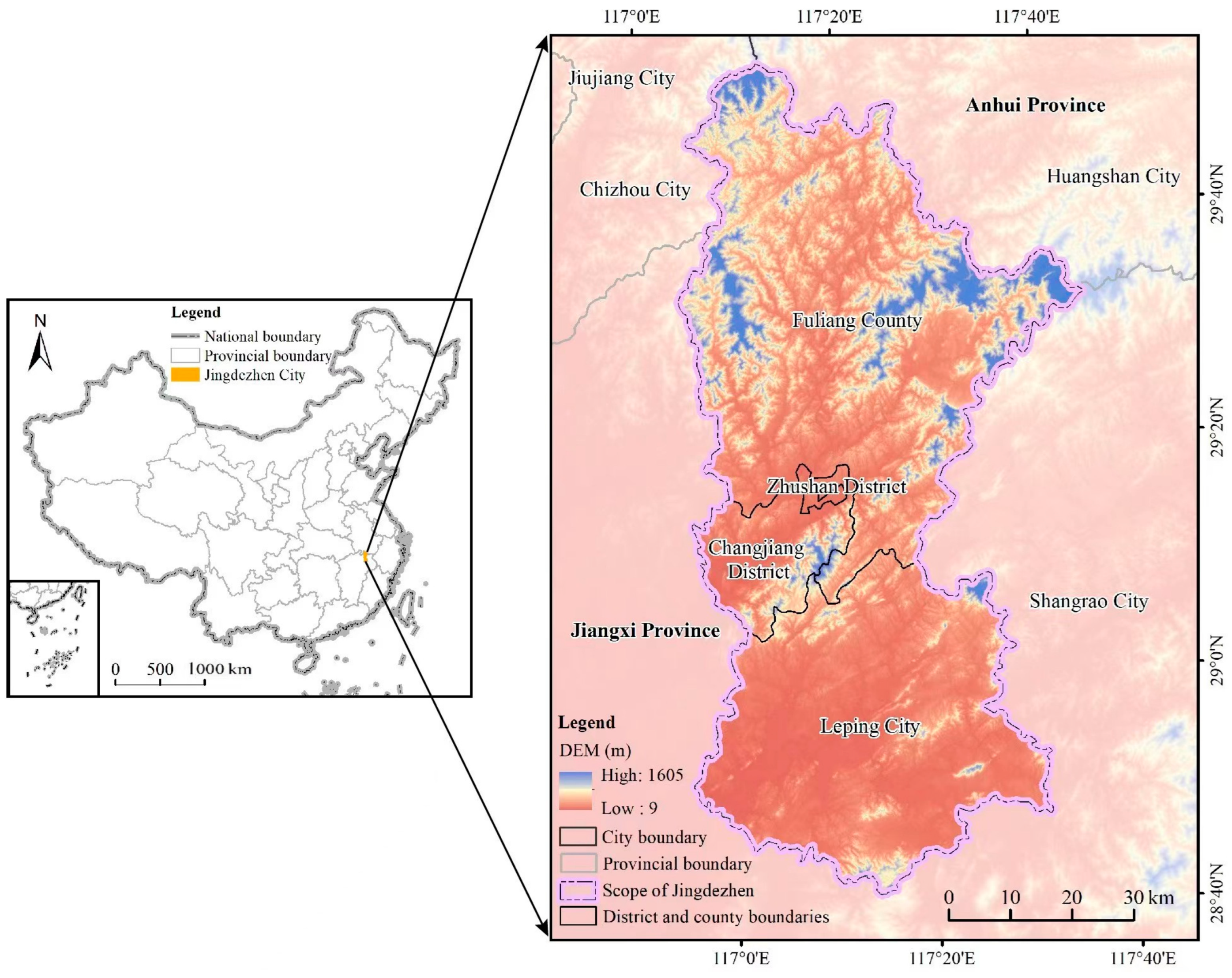
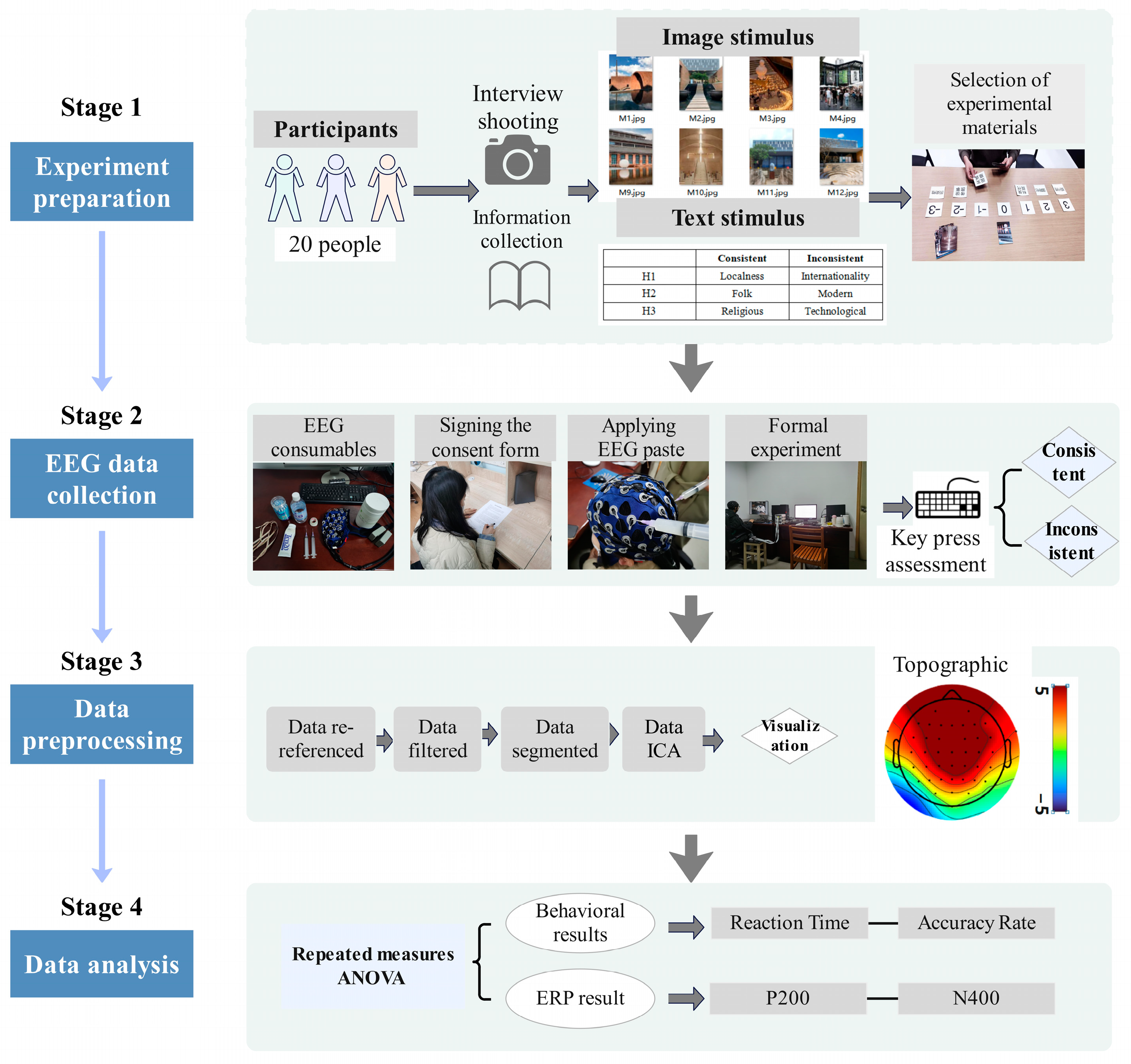
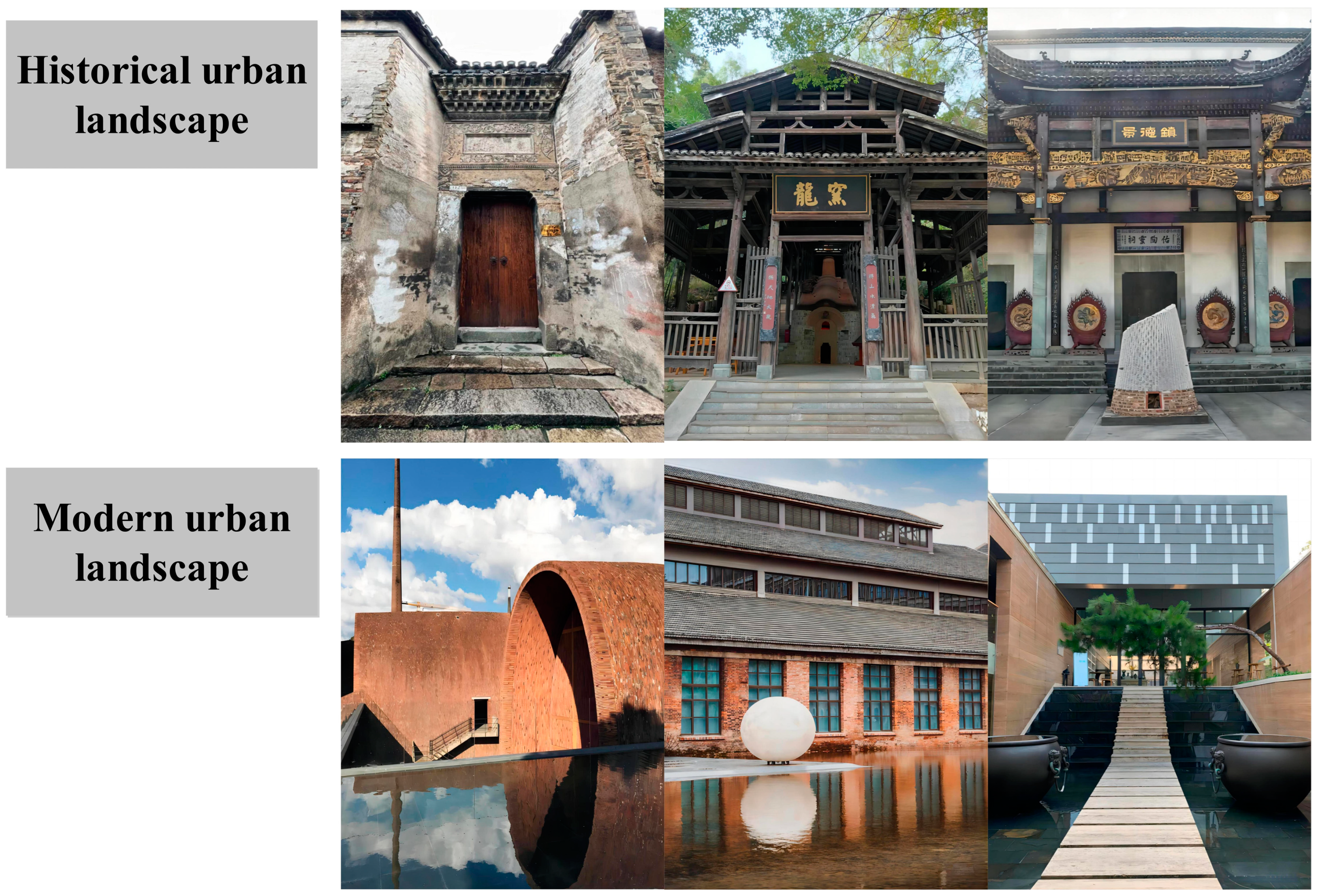
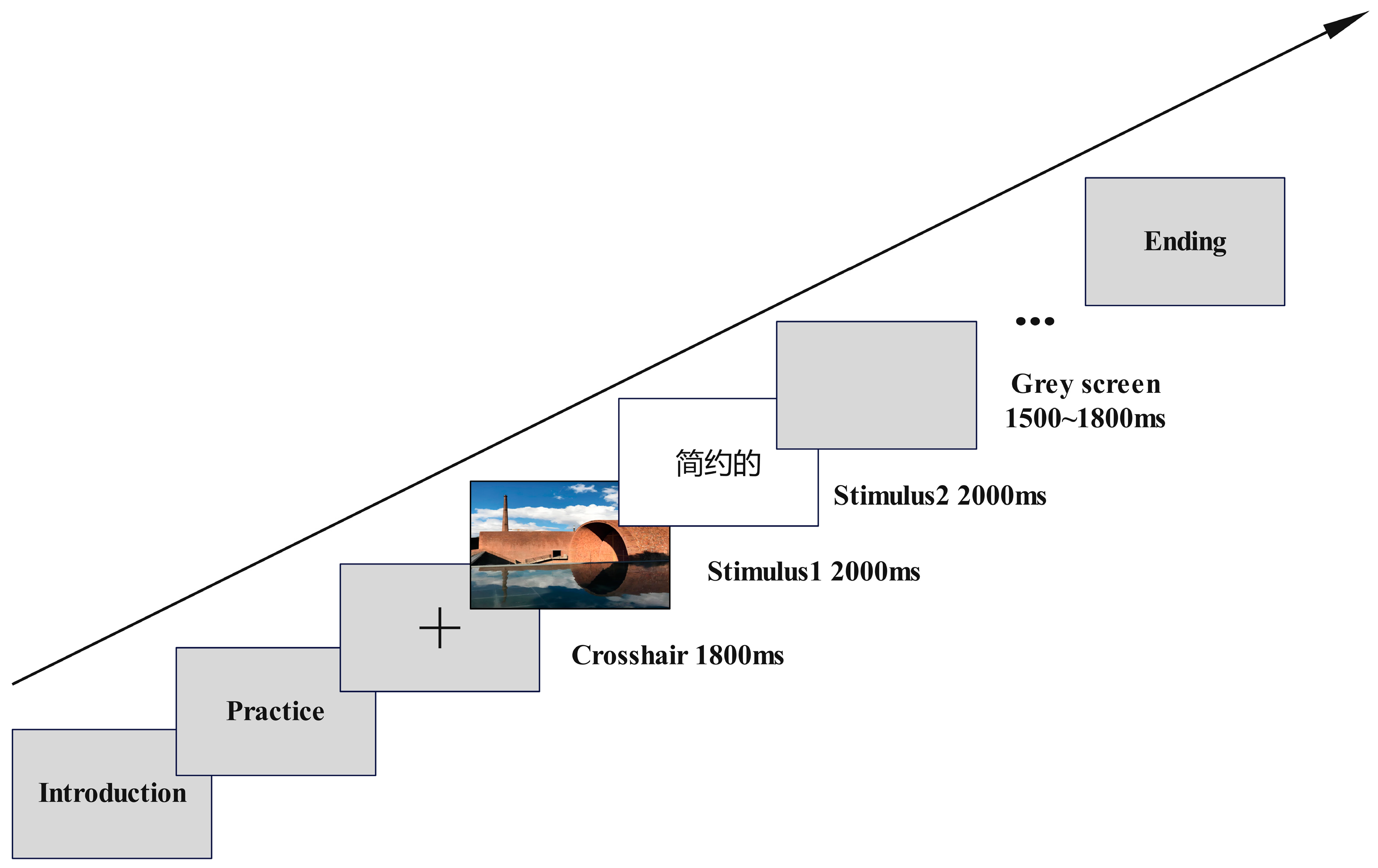
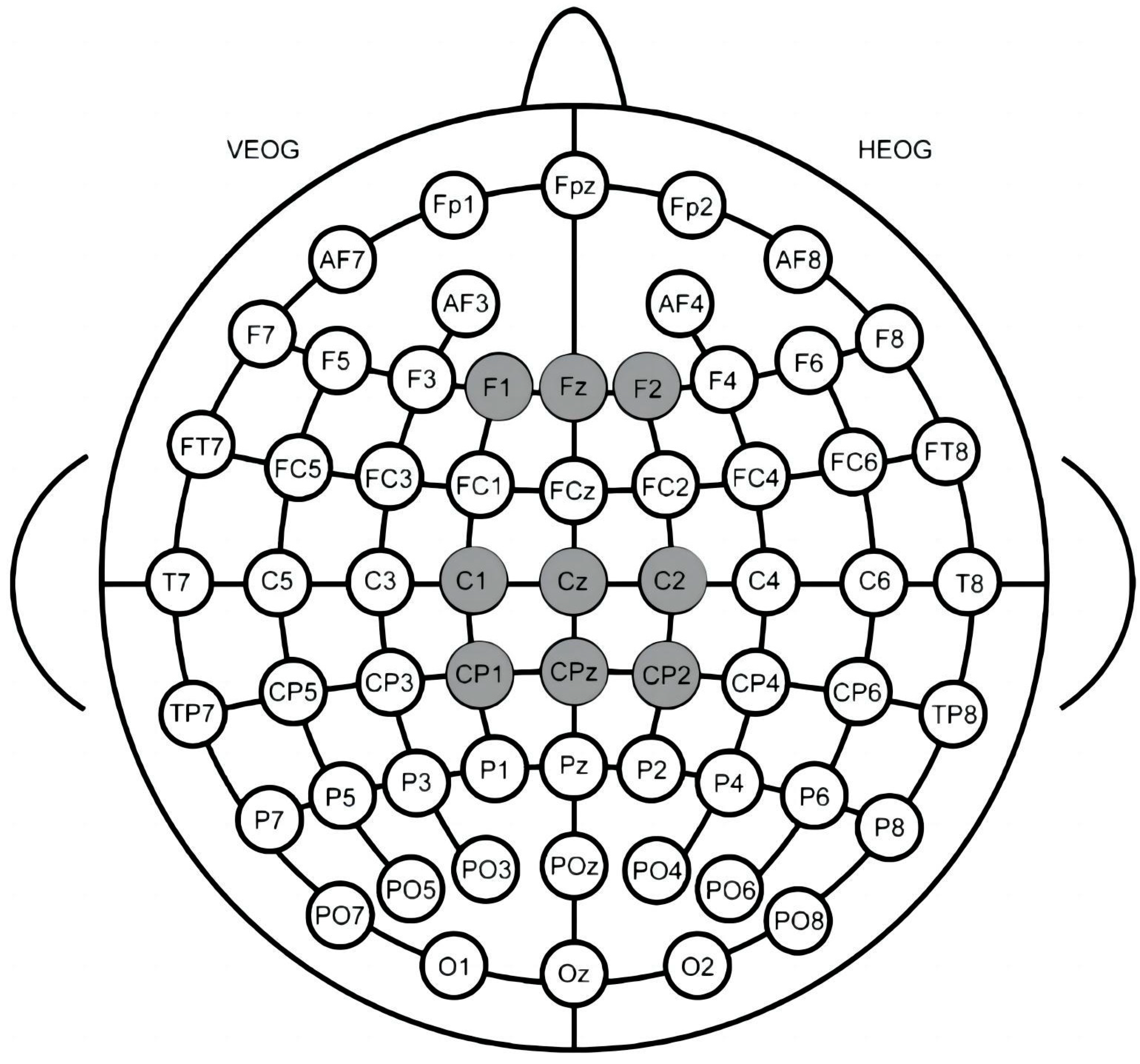
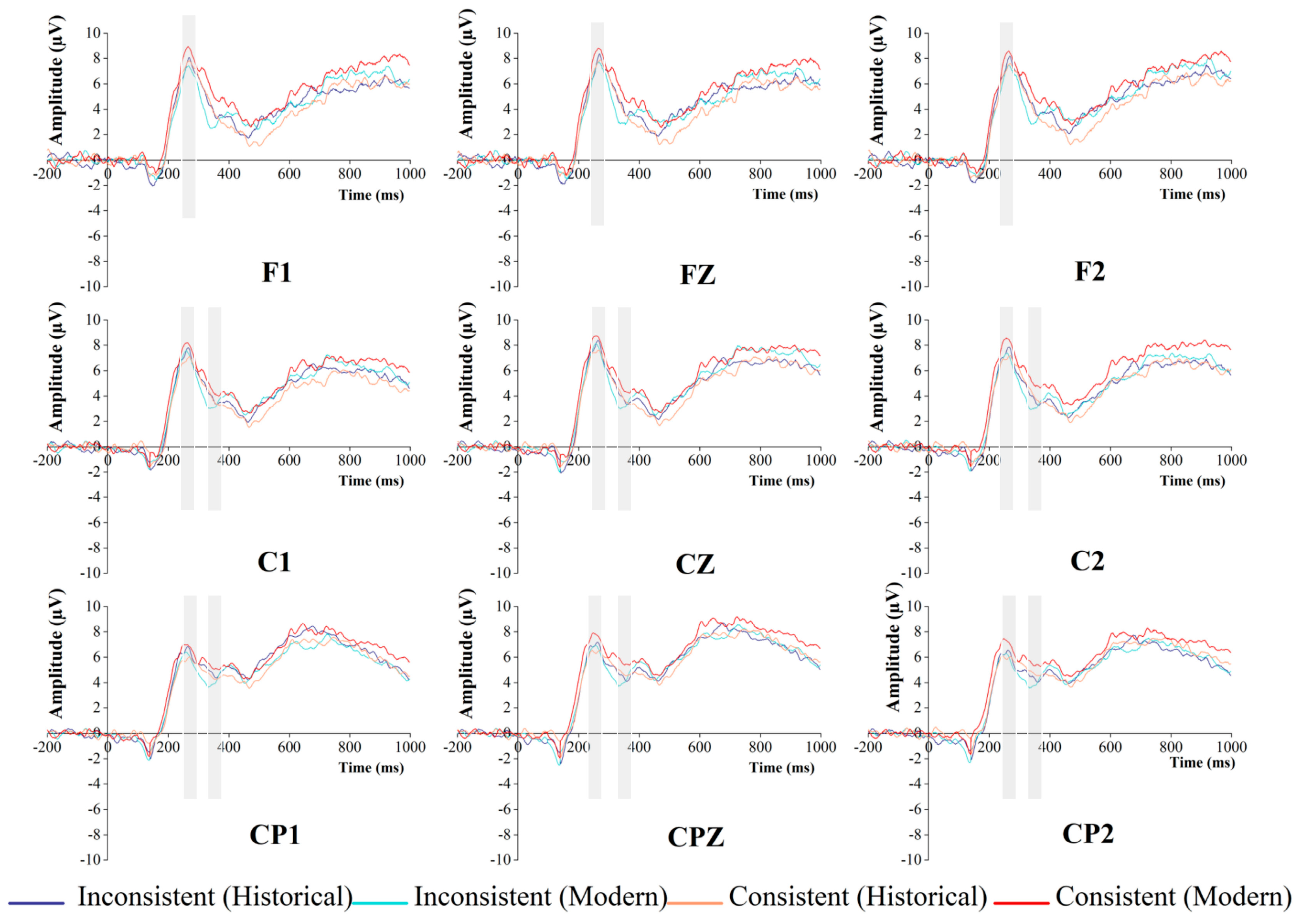
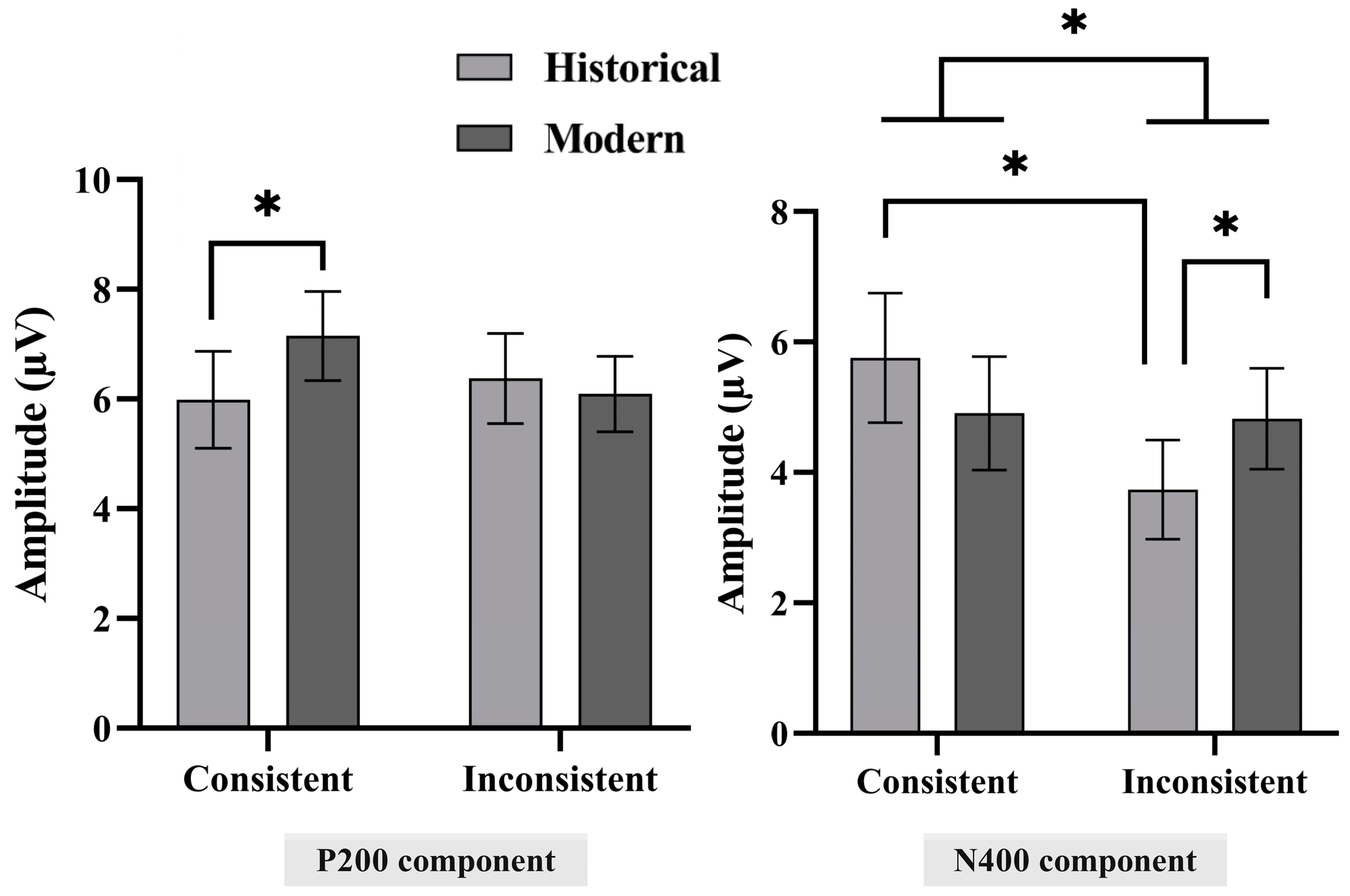
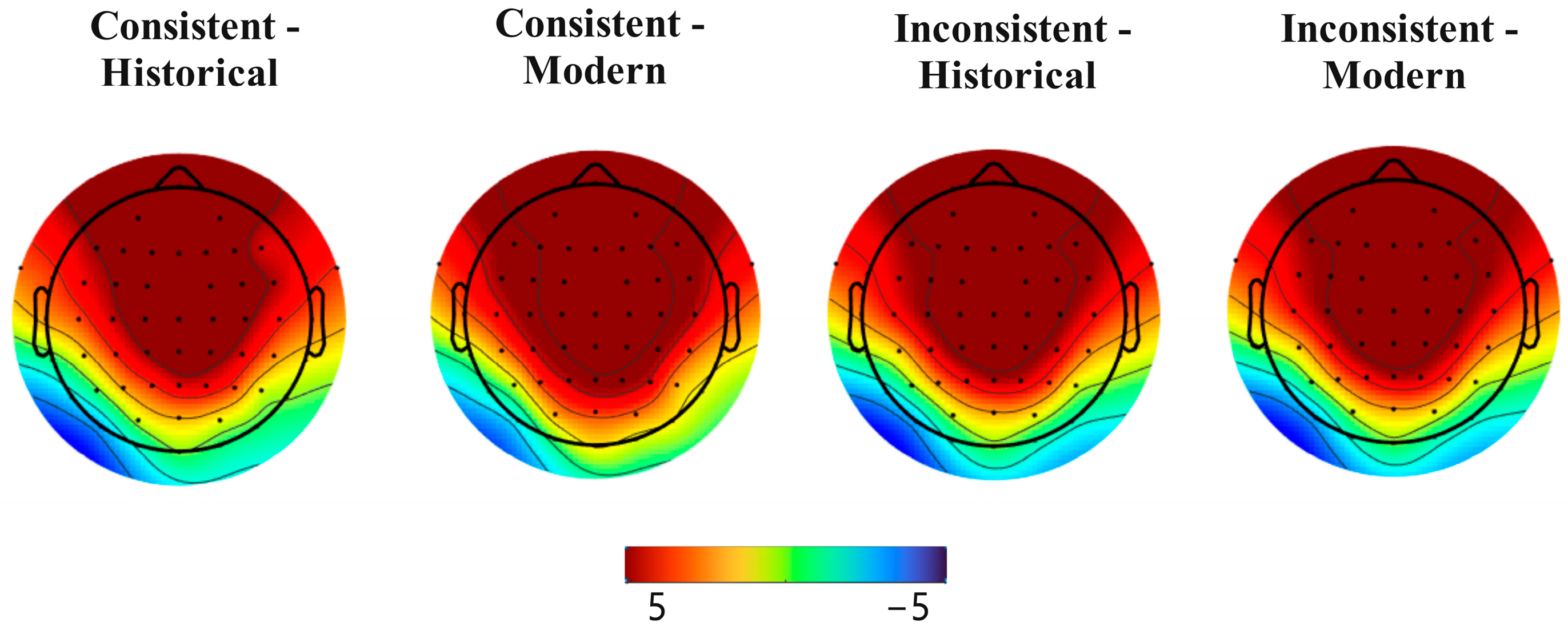
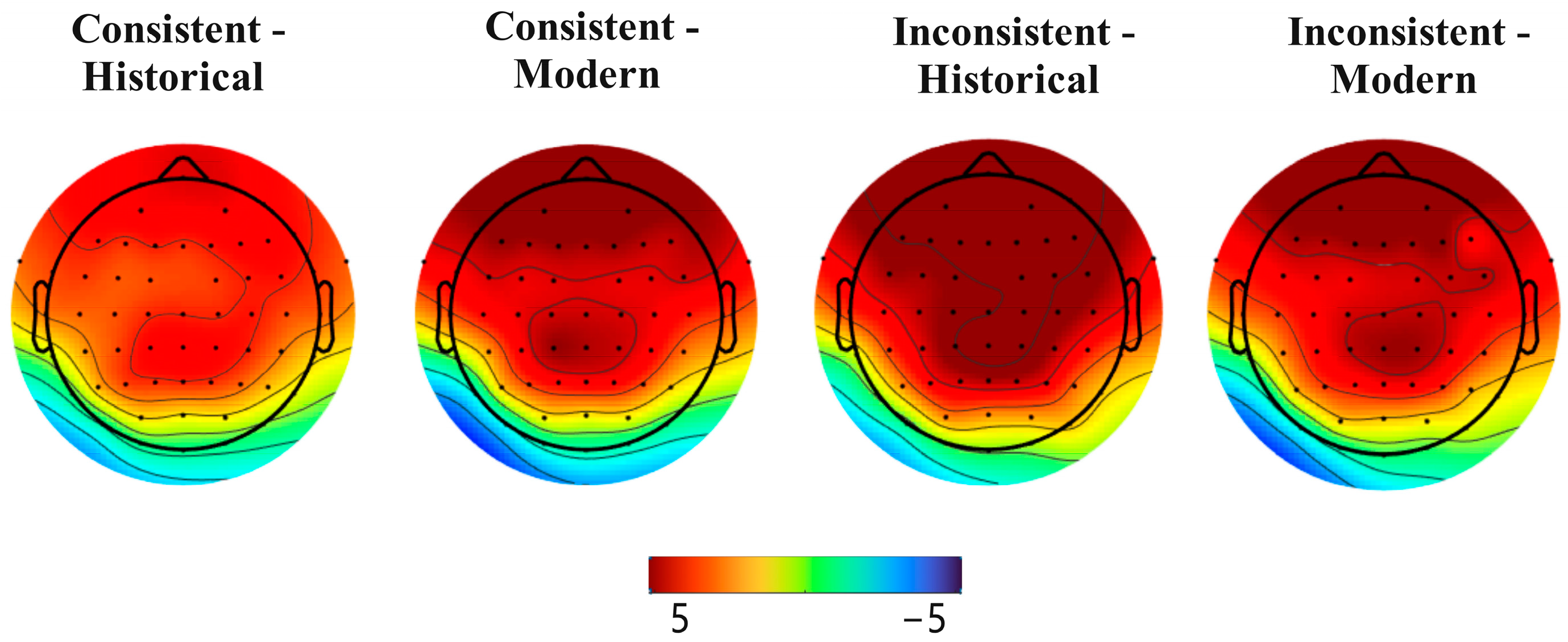
| Location | Onsite Photos | Description |
|---|---|---|
| Taoxichuan Creative District | 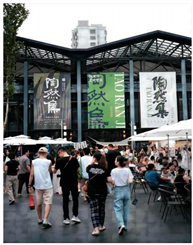 | An art district that embodies the fusion of Jingdezhen’s culture and creativity attracts numerous young people through creative markets and art exhibitions. |
| Jingdezhen Imperial Kiln Museum | 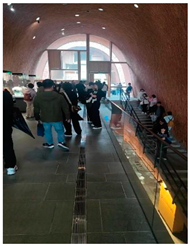 | A unique imperial ceramic kiln site in the world, the museum displays ceramics from various periods and is located in the city’s historic district. |
| Ancient Kiln Folk Customs District | 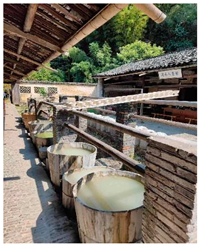 | Representing historical and cultural heritage, houses various ancient kilns and architectures from the Ming and Qing dynasties. |
| Number | Landscape Affective Word Pairs | |
|---|---|---|
| Consistent | Inconsistent | |
| 1 | Localness | Internationality |
| 2 | Folk | Modern |
| 3 | Religious | Technological |
| 4 | Historical | Fashionable |
| 5 | Heritage | Innovative |
| 6 | Minimalistic | Complex |
| 7 | Elegant | Vulgar |
| 8 | Eco-friendly | Polluted |
| 9 | Bustling | Tranquil |
| Landscape Type | Perceptual Match | Reaction Time (ms) | Accuracy Rate (%) |
|---|---|---|---|
| Historical | Consistent | 915.28 ± 101.77 | 89.20 |
| Inconsistent | 894.87 ± 114.08 | 90.90 | |
| Modern | Consistent | 899.90 ± 131.86 | 91.80 |
| Inconsistent | 906.11 ± 135.14 | 91.25 |
| Component | Time Window (ms) | Regions and Electrodes | Consistent (µV) | Inconsistent (µV) | ||
|---|---|---|---|---|---|---|
| Modern | Historical | Modern | Historical | |||
| P200 | 220–260 | Frontal F1, F2, and FZ Central C1, C2, and CZ Central–parietal CP1, CP2, and CPZ | 7.15 ± 0.82 | 5.99 ± 0.88 | 6.903 ± 0.69 | 6.38 ± 0.82 |
| N400 | 310–340 | Central C1, C2, and CZ Central–parietal CP1, CP2, and CPZ | 4.90 ± 0.87 | 5.76 ± 0.99 | 4.82 ± 0.77 | 3.74 ± 0.76 |
Disclaimer/Publisher’s Note: The statements, opinions and data contained in all publications are solely those of the individual author(s) and contributor(s) and not of MDPI and/or the editor(s). MDPI and/or the editor(s) disclaim responsibility for any injury to people or property resulting from any ideas, methods, instructions or products referred to in the content. |
© 2024 by the authors. Licensee MDPI, Basel, Switzerland. This article is an open access article distributed under the terms and conditions of the Creative Commons Attribution (CC BY) license (https://creativecommons.org/licenses/by/4.0/).
Share and Cite
Cheng, Y.; Chen, J.; Tang, J.; Xu, W.; Lv, D.; Xiao, X. Urban Landscape Perception Research Based on the ERP Method: A Case Study of Jingdezhen, China. Buildings 2024, 14, 962. https://doi.org/10.3390/buildings14040962
Cheng Y, Chen J, Tang J, Xu W, Lv D, Xiao X. Urban Landscape Perception Research Based on the ERP Method: A Case Study of Jingdezhen, China. Buildings. 2024; 14(4):962. https://doi.org/10.3390/buildings14040962
Chicago/Turabian StyleCheng, Yue, Jiayin Chen, Jiajia Tang, Wenbo Xu, Dong Lv, and Xuan Xiao. 2024. "Urban Landscape Perception Research Based on the ERP Method: A Case Study of Jingdezhen, China" Buildings 14, no. 4: 962. https://doi.org/10.3390/buildings14040962
APA StyleCheng, Y., Chen, J., Tang, J., Xu, W., Lv, D., & Xiao, X. (2024). Urban Landscape Perception Research Based on the ERP Method: A Case Study of Jingdezhen, China. Buildings, 14(4), 962. https://doi.org/10.3390/buildings14040962







